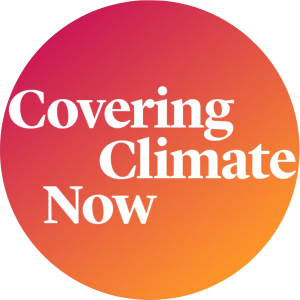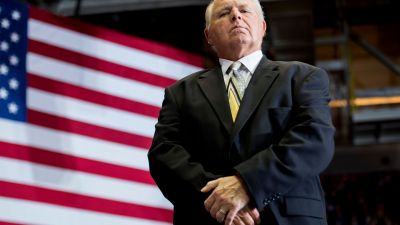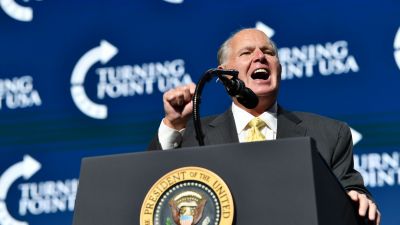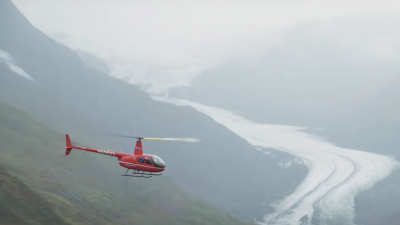Earlier this month, reporter David Schechter won the 2021 duPont-Columbia Silver Baton for his “Verify Road Trip” series. In the winning, hour-long episode Schechter brings a viewer — skeptical about climate change — on a major reporting trip. They travel together across Texas to interview leading scientists and then to Alaska to witness melting glaciers for themselves. Covering Climate Now interviewed Schechter about his project below.
Watch the Documentary
When you’re a local journalist, like me, you become a collector of useful tidbits. A keeper of facts about your community. After a while, you end up knowing a little about a lot. Because of that, when big news happens, local reporters can quickly make sense of what’s happening.
But unlike the coverage of breaking news — which we do with ease — providing context for the big, ongoing stories of our time can give us heartburn.
That’s particularly true with climate change.
That’s why I’m collaborating with Covering Climate Now, a consortium of more than 460 news outlets committed to better coverage of the climate story. Covering Climate Now promotes best practices and organizes workshops where reporters can learn to fold climate change into their daily beats. With a little training, I’ve found, it’s possible to see how climate change intersects with important local issues like commercial development, public health, and transportation.
How did I get interested in a project like this?
At WFAA-TV, the ABC affiliate station in Dallas-Fort Worth, I host a segment called Verify Road Trip. It’s my job to take viewers along on my reporting trips. They see what I see, ask their own questions, and reach their own conclusions.
For our most ambitious episode yet, broadcast in November 2019, I wanted to take a climate doubter to explore his skepticism by meeting top climatologists and visiting Alaska to see melting glaciers for himself.
But immediately, there was a problem. I had no idea what I was talking about. Yes, I’d read plenty about climate change. I accepted the logic about why it’s happening. But it’s not like you can just google “climate change” and feel prepared to wade into a topic that the then-president of the United States was calling a “hoax.”
The truth is, I had never explored — for myself — the documentation that establishes, beyond a doubt, the climate is changing. And digging down into bedrock science on a subject so full of noise and passion felt like a task I didn’t have the time or taste for.
On the rare occasions when I absolutely had to report about climate, I found myself defaulting to both-sidesism — saying that “climate change is controversial” and giving both sides equal weight in my story.
Sound familiar?
But I knew I couldn’t take a skeptic on an epic, climate change reporting trip to Alaska without having my own grasp of the science. So, I decided it was time to get myself some climate confidence.
It took a bit of fumbling around, but guess what? Once I knew where to look, I felt foolish for having been intimidated. There’s a mountain of high-quality research that supports the conclusion that climate change is real, man-made, and a serious danger.
As one of the world’s leading climatologists, Michael Mann of Penn State University, said recently on 60 Minutes, “There’s about as much scientific consensus about human-caused climate change as there is about gravity.”
In case you don’t already know, let me tell you about two gold-standard sources of scientific documentation that the climate is changing, and human activities — especially the excessive burning of oil, gas, and coal — are to blame.
The first is from the Intergovernmental Panel on Climate Change, or IPCC. Sponsored by the United Nations, IPCC reports are a collaboration among thousands of scientists and experts around the world who evaluate the available peer-reviewed science to summarize the current state of knowledge about what causes climate change, what effects it might have — for example, on sea-level rise — and what measures can address the problem.
IPCC scientists stated in the IPCC Fifth Assessment Report, published in 2014, that “Human influence on the climate system is clear,” and, without additional efforts to reduce humanity’s heat-trapping emissions, “warming by the end of the 21st century will lead to high to very high risk of severe, widespread, and irreversible impacts globally.” A more recent IPCC report said that humanity must cut global emissions by forty-five percent by 2030 and all the way to zero by 2050 to limit “climate-related risks to health, livelihoods, food security, water supply, human security, and economic growth.”
The second primary source focuses on the United States. The National Climate Assessment is a scientific collaboration of 300 experts and 13 US government agencies. The assessment published in 2018 concluded: “Climate change creates new risks and exacerbates existing vulnerabilities in communities across the United States, presenting growing challenges to human health and safety, quality of life, and the rate of economic growth.” For example, “Rising temperatures, extreme heat, drought, wildfire on rangelands, and heavy downpours are expected to increasingly disrupt agricultural productivity in the United States.”
These are two peer-reviewed, deeply vetted reports written by the leading scientists in the US and world. They leave no wiggle room to deny climate change. And they give a journalist the armor he or she needs to fight past the journalistic malpractice of both-sidesism.
To further help journalists access the resources they need, Covering Climate Now is working with renowned climatologist Katharine Hayhoe at Texas Tech University. Together, they’ve developed this quick guide to covering climate change at the local level. Dr. Hayhoe also does a great job debunking misunderstandings–such as that the sun is making the earth warmer, or that weather patterns like El Niño juice up the climate.
My journey has taken me from avoiding coverage of climate change to appreciating it for the existential threat that it is. Climate change compounds the complexity of almost every other major challenge we face, which gives reporters with plenty to report on. As journalists Mark Hertsgaard and Andrew McCormick of Covering Climate Now recently wrote, “the climate crisis is a story for every beat.”
I’ve continued reporting on climate issues since that trip to Alaska; sharing with viewers how extreme weather events are getting more extreme, how hotter summers are 10 times more likely to happen nowadays, and how wind turbines do kill lots of birds (though nothing compared to how many are killed by cats).
Local journalists will always be great at reacting to breaking news. With a little confidence, we can also be great at covering climate change, arguably the biggest story of our time.

Read more from Covering Climate Now



